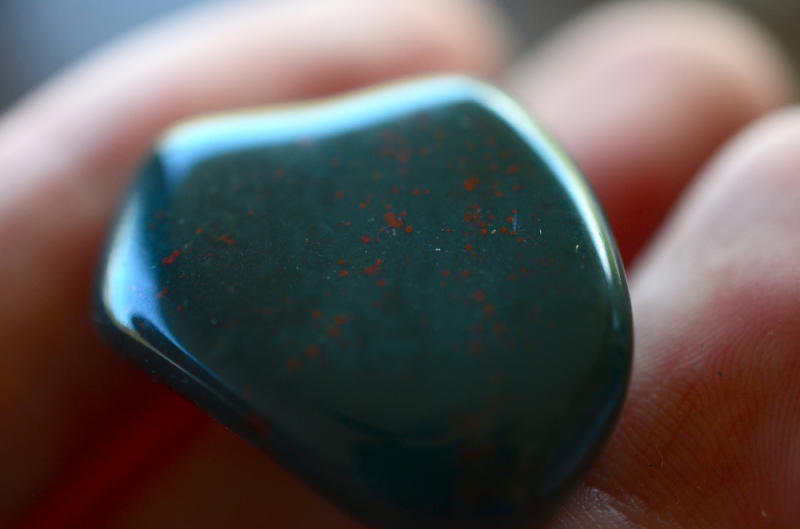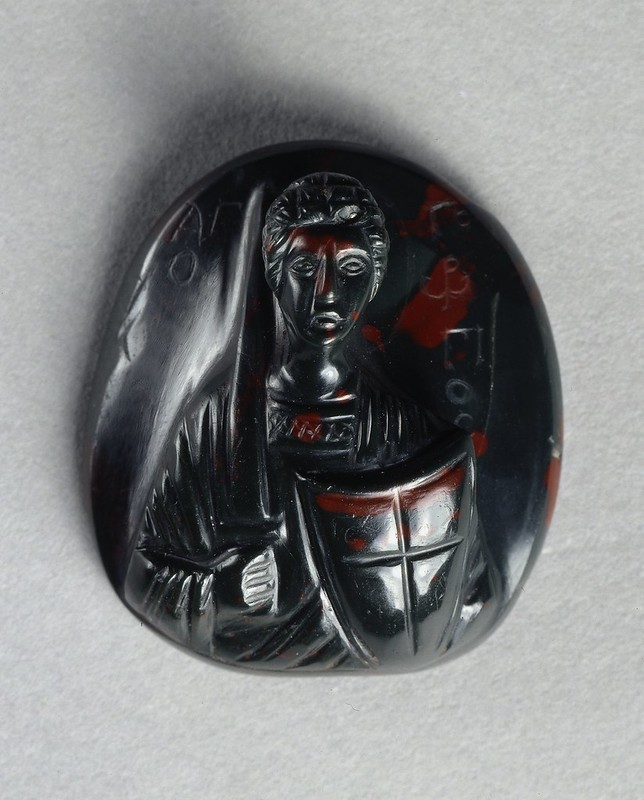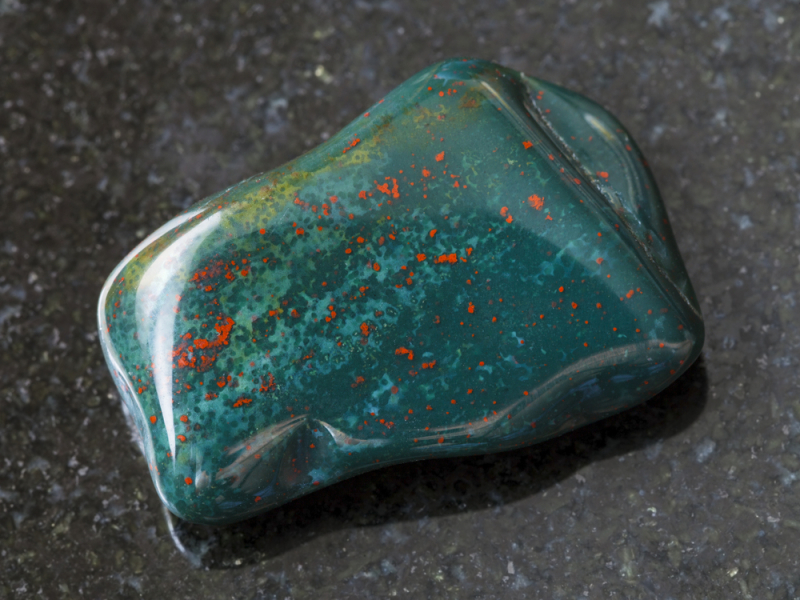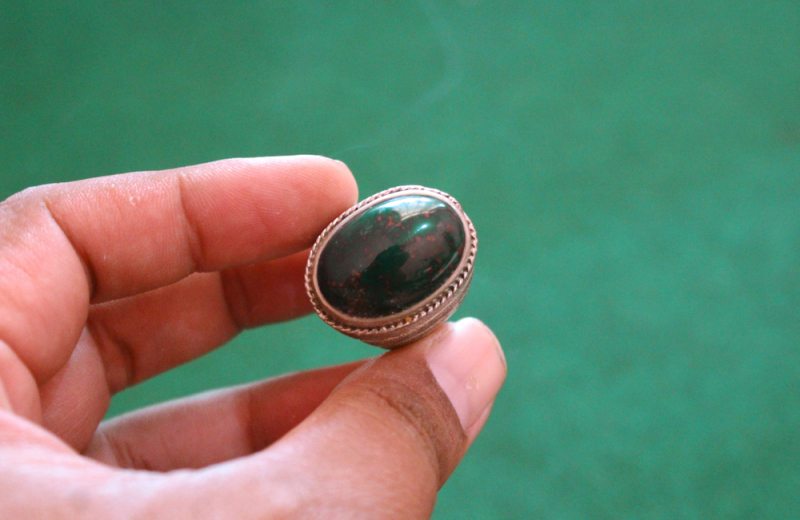Bloodstone, also known as heliotrope, has fascinated humanity for centuries with its enchanting appearance—a dark green canvas adorned with vivid red spots. Beyond its aesthetic charm, this gemstone has a rich history, legends entwined around it, and a lasting allure. In this comprehensive guide, we explore the depths of bloodstone, uncovering its mysterious origins, the myths enveloping it, and why it continues to captivate both seasoned collectors and newcomers to the world of gemstones.

Quick Facts About Bloodstone
- Primary Characteristics: Bloodstone is a dark green, opaque variety of chalcedony, a type of quartz.
- Distinctive Feature: Known for its bright red spots or larger areas, iron oxide inclusions give the appearance of drops of blood.
- Alternate Names: Referred to as Aggregate Heliotrope, Blood Jasper, and The Martyr’s Stone.
- Birthstone Significance: Traditionally recognized as the birthstone for March.
- Historical Association: Termed “the martyr’s stone,” bloodstone has adorned medieval carvings of Christ.
What is Bloodstone ?
Bloodstone, or heliotrope, is a cryptocrystalline silica mineral featuring spots of hematite—an oxidized iron mineral that leaves a red streak. Ranging from glossy black to red and orange hues, bloodstone gets its name from the red spots, resembling drops of blood. The classic form is green jasper with irregular red spots, sometimes mottled with other jasper colors like blue or white.
Superstitions and Mythology of Bloodstone
Beyond decoration, bloodstone has a history steeped in superstition, dating back over 2,000 years. Powers attributed to it include invisibility, weather manipulation, divination, longevity, wealth, courage, and protection against venomous creatures. The belief in bloodstone's ability to stop bleeding, found in India, has a basis in hematite's astringent properties, though modern medical methods are preferred.
A unique myth surrounds bloodstone, linking it to the stone upon which Christ bled during the Crucifixion. This legend enhances its reputation as a powerful talisman.
Physical Properties of Bloodstone
Sharing similarities with jasper, bloodstone rates 7 on the Mohs scale with a specific gravity of 2.6. Its tight-grained texture allows a high gloss polish, making it desirable for decorative purposes. The base of bloodstone, sometimes translucent, contains hematite in a chalcedony matrix.
How is Bloodstone formed?
Formed similarly to other jaspers, bloodstone starts with nodules forming in cracks within bedrock. Silica-rich waters infiltrate over millions of years, depositing minerals. The green and blue hues come from chloride impurities, and red spots from integrated hematite. Uneven distribution of impurities gives bloodstone its unique appearance.
Where to find Bloodstone?
While not the rarest, bloodstone is relatively uncommon due to its specific formation. Major sources include Brazil, Australia, Germany, and within the United States, notably in California. The stone's distribution can be surprisingly widespread, as found in the Santa Ynez riverbed.
Lapidary Tips for Working with Bloodstone
Bloodstone's diverse appearance makes it ideal for lapidary work. Similar to working with jasper, diamond tools and progressive grits up to 1200, followed by cerium oxide for polishing, are recommended. Undercutting may occur due to softer hematite sections, but a lighter touch on tools or softer wheels can mitigate this. Bloodstone's unpredictability makes it a fascinating choice for three-dimensional carvings, offering unique visual effects.
In conclusion, bloodstone, with its captivating history, legends, and lapidary appeal, stands as a gemstone of enduring significance. Whether admired for its aesthetic beauty or valued for its mythical attributes, bloodstone continues to hold a special place in the world of gem enthusiasts and collectors alike.
Tags:
Bloodstone




